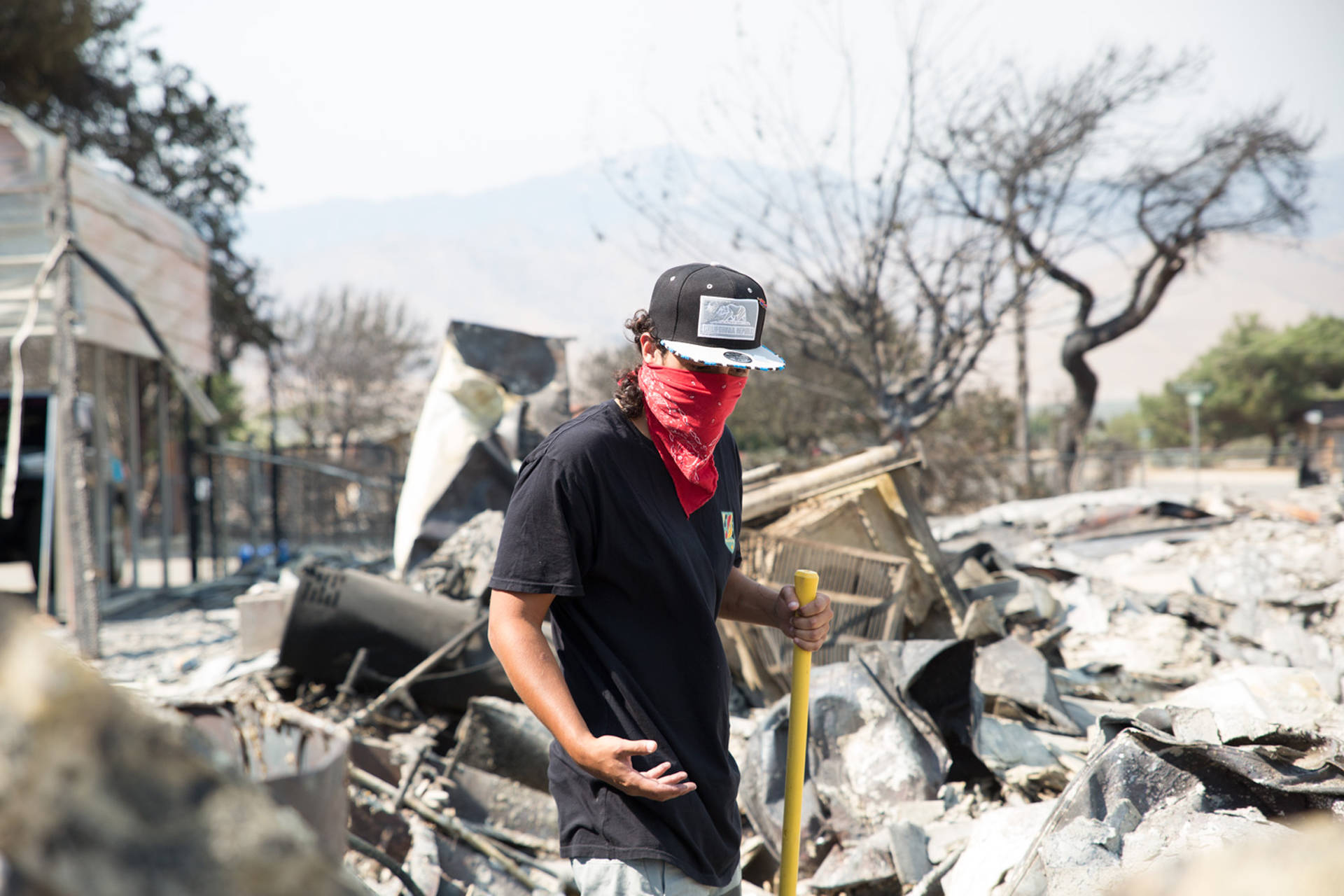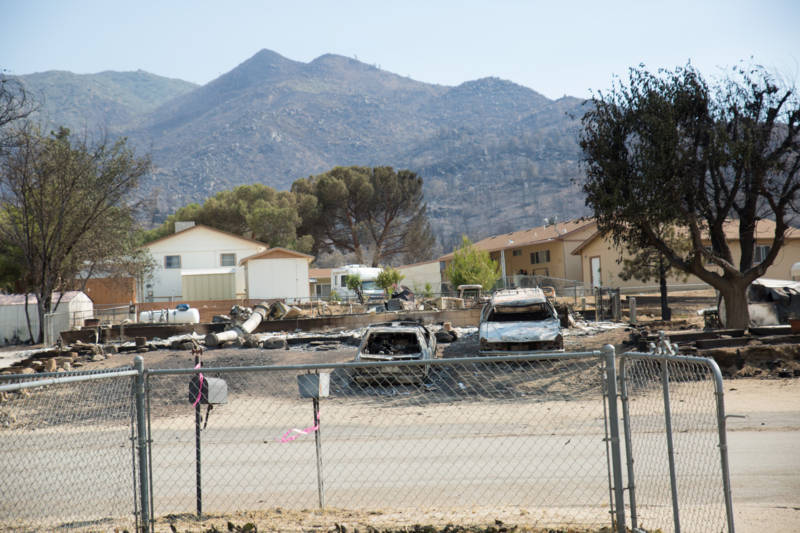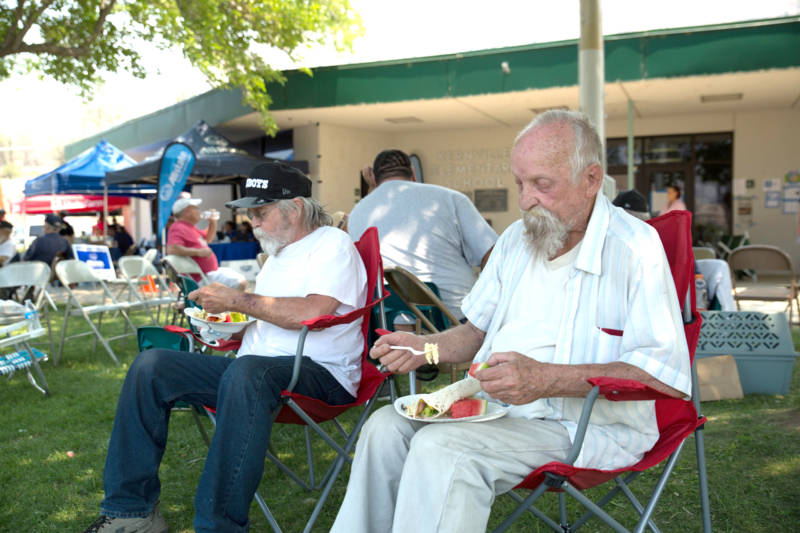Last week a fast-moving wildfire swept through the rural communities of the Lake Isabella area, 40 miles east of Bakersfield. At least 285 residences burned and there were two deaths. The fire was one of the state’s most destructive.
As I drove into Kernville on my way to the emergency Red Cross shelter at the elementary school, I saw people at the river park barbecuing and fishing. Rafters guided the rapids. But on the other side of the lake, the Erskine Fire had scorched the hills black. Whole neighborhoods were burnt to ash.
By the time I arrived on Day 4, the fire had moved deep into the Piute Mountains. Evacuation orders were still in place.
I came to report on those displaced by the fire, but I also have family in South Lake and Squirrel Valley. Both communities were hit hard by the fire. I was last there three weeks ago on another assignment. The day after returning home to San Francisco, I got a text from my dad: “Our house is most likely gone due to fire on Cook Peak.”
When I got back to Kern County, I learned that my aunt and uncle had lost their home in South Lake. The community attracts retirees and those on a fixed income. People who can’t make it elsewhere come here. The neighborhoods are mostly mobile homes.
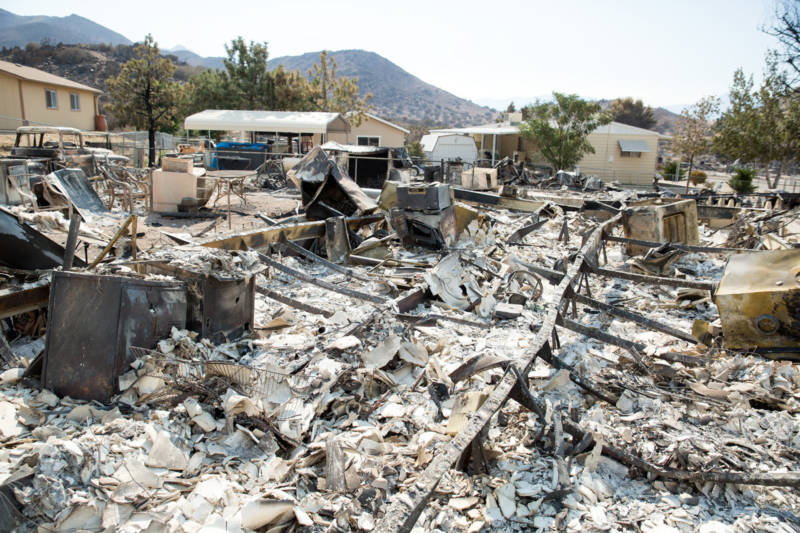
On my way, I stopped by the Faith Community Church in South Lake, which had been turned into a distribution center run by volunteers. They had just smuggled in 10 truckloads of supplies using dirt trails surrounding the lake. Not even well-intentioned church folk were allowed back in to the area. But many people were without water and electricity, and were ill prepared for a disaster. They needed water, food, pet supplies and more.
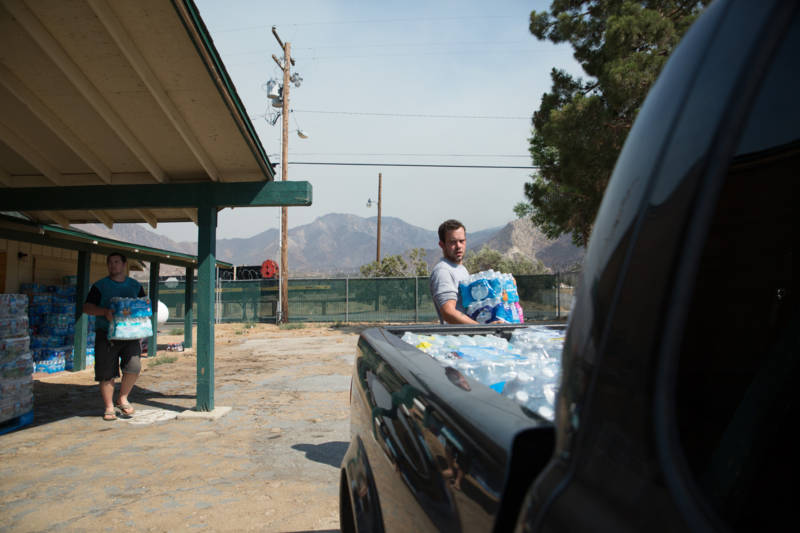
Chunks of neighborhoods in South Lake had been reduced to charred rubble. It was hot, 105 degrees with no shade. As many people have said, it looked like a bombed-out war zone. I found my aunt’s house only because I recognized the burnt cars in the front yard. The fire took out six homes on her block. Some homes remained untouched by the fire.
